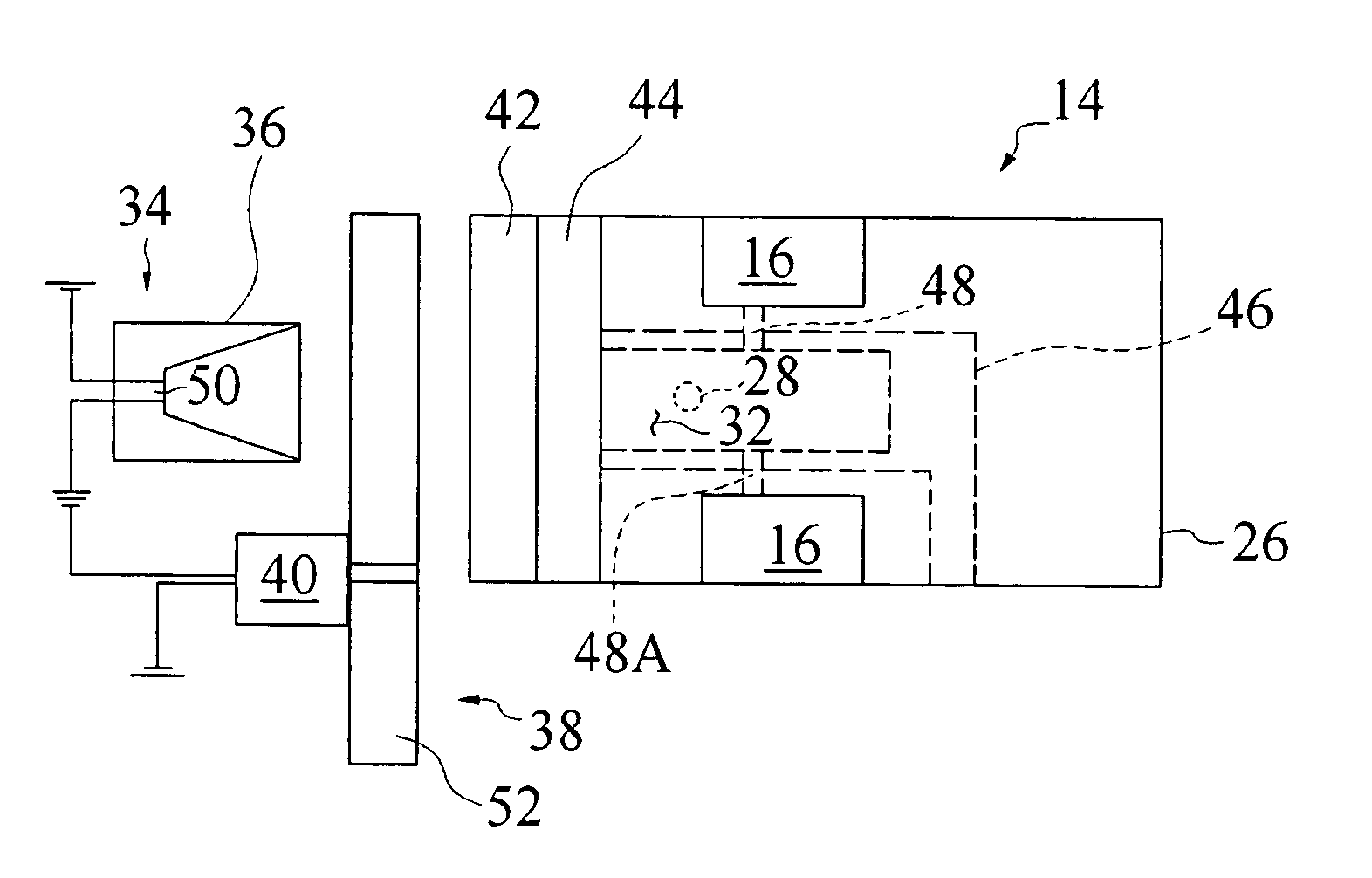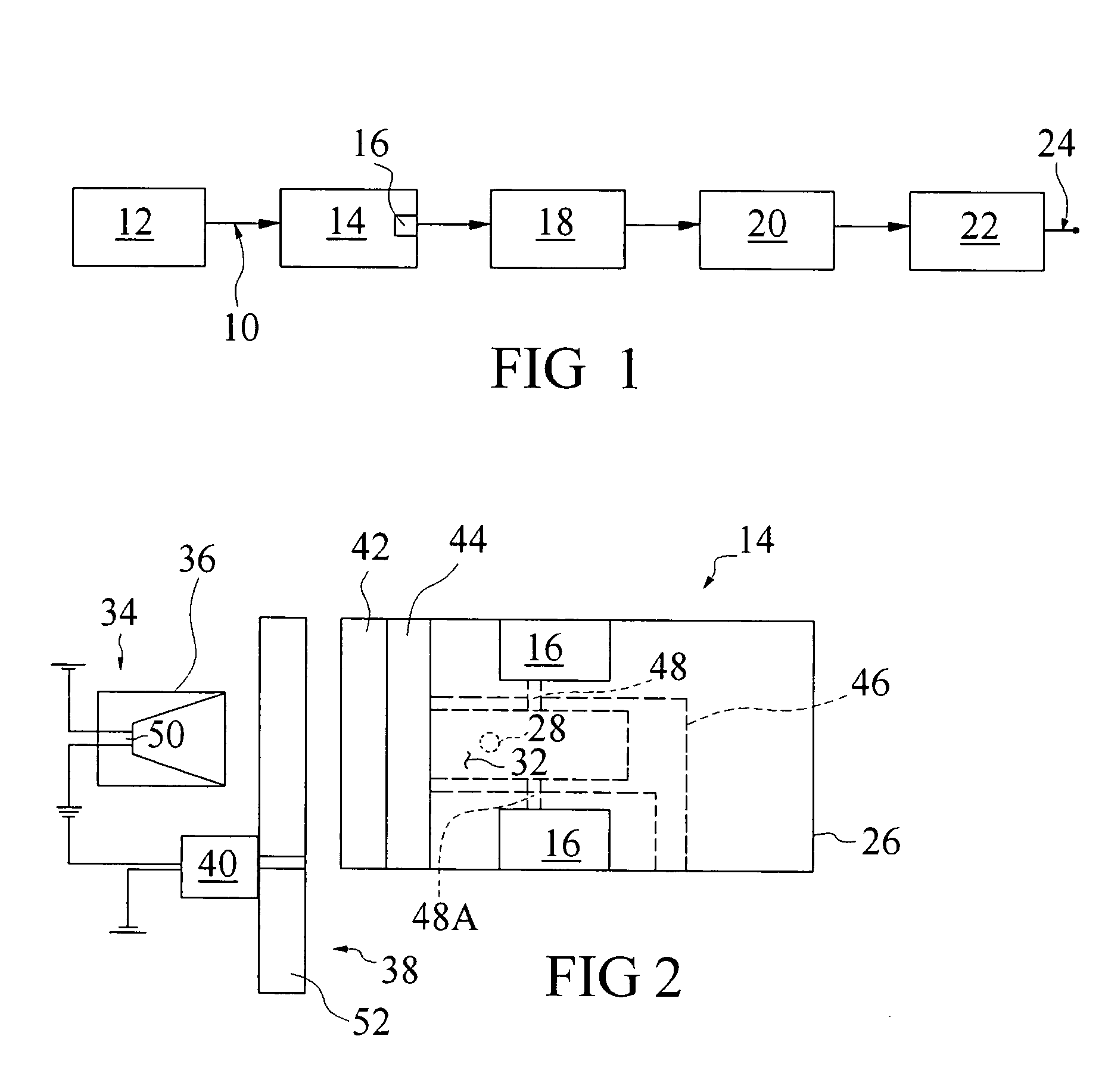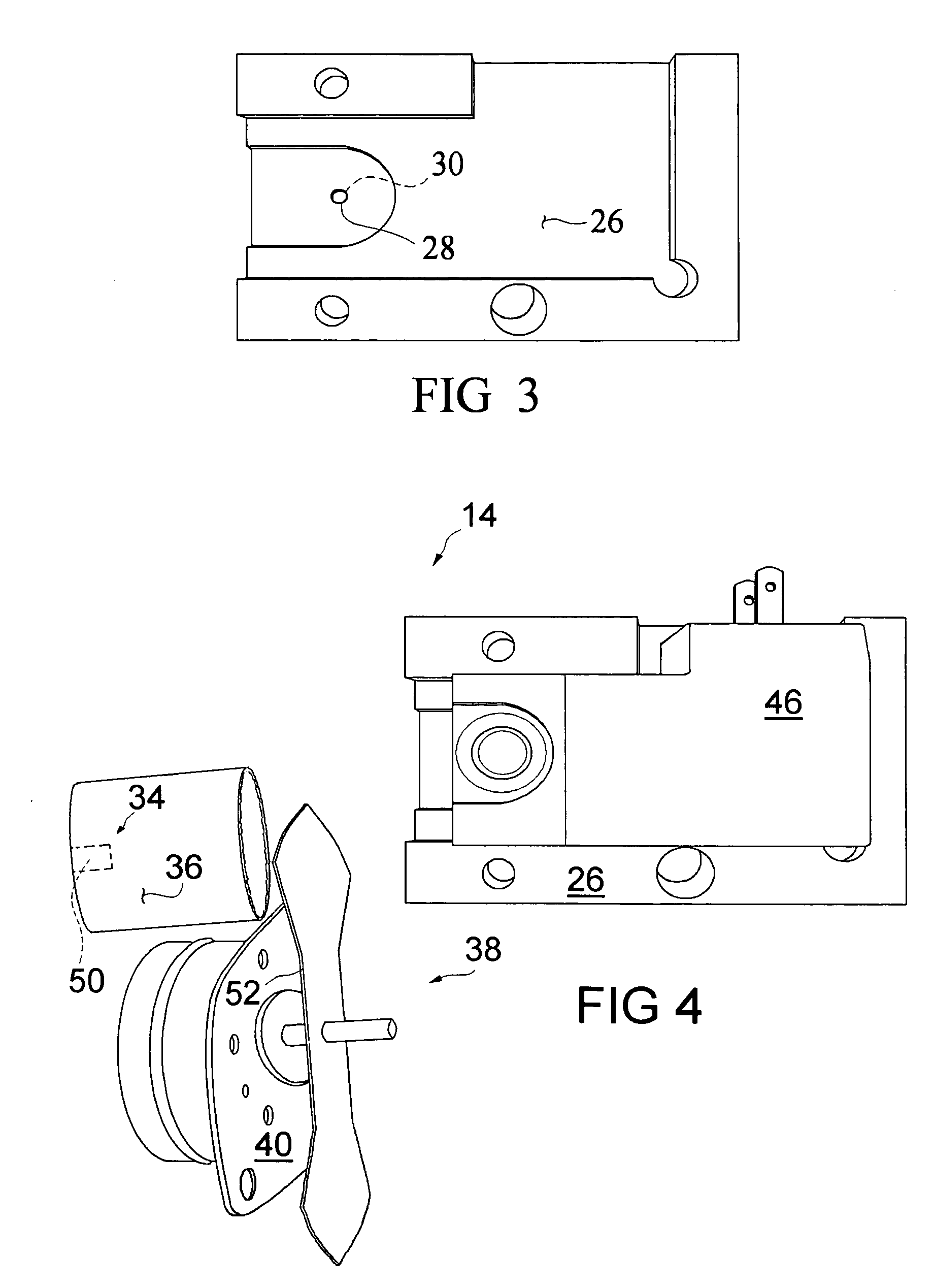Blood monitoring system
a blood monitoring and system technology, applied in the field of concentration monitoring, can solve the problems of inability to provide real-time concentrations and partial pressures of blood gases, de facto standard methods, high cost, etc., and achieve the effect of reducing post-operative morbidity
- Summary
- Abstract
- Description
- Claims
- Application Information
AI Technical Summary
Benefits of technology
Problems solved by technology
Method used
Image
Examples
Embodiment Construction
U.S. Provisional Patent Application Ser. No. 60 / 491,906, filed Aug. 1, 2003, entitled “Blood Monitoring System” is hereby incorporated by reference in its entirety.
A schematic diagram of a preferred embodiment of an apparatus according to the present invention is generally shown in FIG. 1. Exhaust gas 10 from a fluid transfer device 12, such as an extracorporeal blood oxygenator, travels to a gas measurement device 14. The gas measurement device 14 includes a microphone 16 that produces an electrical signal that may be amplified and converted to a digital signal via an analog / digital converter 18. The digital signal may be routed through a digital signal processor 20. This binary number is converted to a gas concentration using a look-up table 22, polynomial, or some other method known in the art. The gas concentration may then be corrected 24 using known variables such as barometric pressure, water vapor pressure, sweep gas flow, and blood flow to determine a partial gas pressure ...
PUM
 Login to View More
Login to View More Abstract
Description
Claims
Application Information
 Login to View More
Login to View More - R&D
- Intellectual Property
- Life Sciences
- Materials
- Tech Scout
- Unparalleled Data Quality
- Higher Quality Content
- 60% Fewer Hallucinations
Browse by: Latest US Patents, China's latest patents, Technical Efficacy Thesaurus, Application Domain, Technology Topic, Popular Technical Reports.
© 2025 PatSnap. All rights reserved.Legal|Privacy policy|Modern Slavery Act Transparency Statement|Sitemap|About US| Contact US: help@patsnap.com



